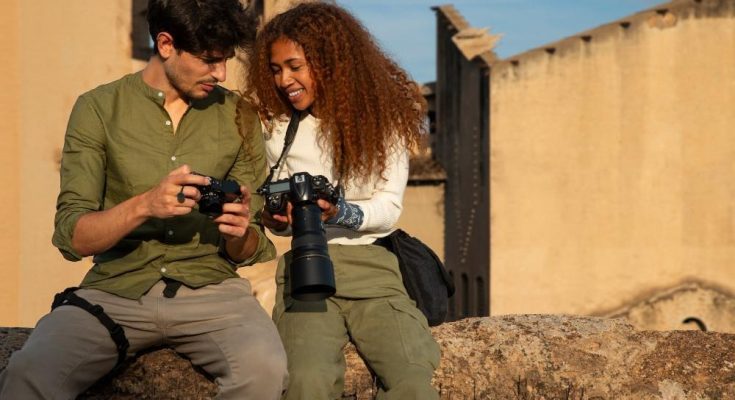Choosing your first wildlife photography tour can feel overwhelming. With destinations ranging from Costa Rican rainforests to African savannas, each promising unique experiences and stunning shots, how do you decide where to invest your time and money?
The decision becomes even more complex when you consider factors like seasonality, wildlife diversity, accessibility, and your current photography skill level. Making the wrong choice could mean missing peak wildlife activity, struggling with challenging conditions, or returning home with disappointing results.
Let’s break down the key factors that should guide your decision-making process.
Understanding Your Photography Goals
Before diving into destination comparisons, clarify what you want to achieve. Are you drawn to dramatic predator-prey interactions, colorful tropical birds, or intimate primate encounters? Different destinations excel in different types of wildlife photography.
Big Cats and Dramatic Action: East African destinations like Kenya and Tanzania offer unparalleled opportunities for photographing lions, leopards, and cheetahs during hunting sequences.
Tropical Biodiversity: Central American countries like Costa Rica provide incredible variety with over 900 bird species, multiple monkey species, and unique creatures like sloths and poison dart frogs.
Arctic Wildlife: Northern destinations offer polar bears, arctic foxes, and the magical backdrop of snowy landscapes.
Matching Destinations to Skill Levels
Your current photography experience should heavily influence your destination choice. Some locations are more forgiving for beginners, while others demand advanced technical skills and field experience.
Beginner-Friendly Destinations: Costa Rica stands out as an excellent choice for first-time wildlife photographers. The country’s compact size means shorter travel times between locations, and many animals are active during daylight hours when lighting conditions are more manageable. The biodiversity is exceptional, offering numerous photo opportunities even if you miss certain shots.
Intermediate Challenges: East African safaris require more technical skill due to challenging lighting conditions and fast-moving subjects. However, the payoff in terms of dramatic imagery can be extraordinary for those ready to handle variable conditions.
Companies specializing in wildlife photography tours like Coconut Travel focus on matching photographers with appropriate destinations based on skill level and interests, offering guided experiences that maximize learning opportunities while ensuring sustainable travel practices.
Seasonal Considerations and Wildlife Activity
Timing can make or break your wildlife photography experience. Each destination has optimal windows when wildlife activity peaks and weather conditions favor photography.
Dry Season Advantages: In many tropical and subtropical regions, dry seasons concentrate wildlife around water sources, making animals easier to locate and photograph. Vegetation is also less dense, providing clearer sight lines.
Migration Patterns: Some of the world’s most spectacular wildlife photography opportunities coincide with migration events. East Africa’s Great Migration, bird migrations in Central America, and marine life movements all follow predictable seasonal patterns.
Weather and Light Quality: Consider how seasonal weather affects both wildlife behavior and photographic conditions. Overcast skies can provide beautiful, even lighting for forest photography but may limit the dramatic golden hour shots many photographers seek.
Accessibility and Logistics
Your comfort level with travel logistics should influence your destination choice. Some locations require extensive planning, multiple flights, and significant physical stamina, while others offer more straightforward access.
Infrastructure Quality: Well-developed eco-tourism infrastructure can significantly enhance your experience, especially on your first wildlife photography tour. Good roads, reliable accommodations, and experienced local guides make the difference between a smooth learning experience and a challenging ordeal.
Group Size and Guide Quality: Small group tours typically provide more personalized instruction and better wildlife viewing opportunities. Look for operators who employ local naturalist guides with extensive knowledge of animal behavior and optimal photography locations.
Budget Considerations Beyond the Obvious
While tour costs are important, consider the total investment including equipment needs, travel insurance, and potential equipment rental or purchase requirements.
Equipment Rental Options: Some destinations offer better equipment rental opportunities than others. If you’re not ready to invest in expensive telephoto lenses, choose destinations where quality rental gear is available.
Health and Safety Costs: Factor in vaccination requirements, malaria prophylaxis, and emergency medical coverage. Some destinations require significant additional health-related expenses that can impact your overall budget.
Making Your Final Decision
After evaluating all these factors, create a simple decision matrix. Rate each potential destination on:
- Match with your photography goals (1-10)
- Suitability for your skill level (1-10)
- Optimal timing availability (1-10)
- Logistical comfort level (1-10)
- Total budget fit (1-10)
The destination with the highest total score likely represents your best choice for a first wildlife photography tour.
Beyond the First Trip
Remember that your first wildlife photography tour is just the beginning. Choose a destination that will build your confidence and skills while providing incredible memories and images.
For many, wildlife photography becomes more than a skill it evolves into a passion or even a lifestyle. Learn how adventure photography is the ultimate masculine hobby for modern explorers seeking challenge, self-expression, and connection with the natural world.
Consider working with specialized tour operators who understand the unique needs of wildlife photographers and can provide the guidance and support necessary for a successful first experience. The investment in professional guidance often pays dividends in both image quality and personal growth as a photographer.



